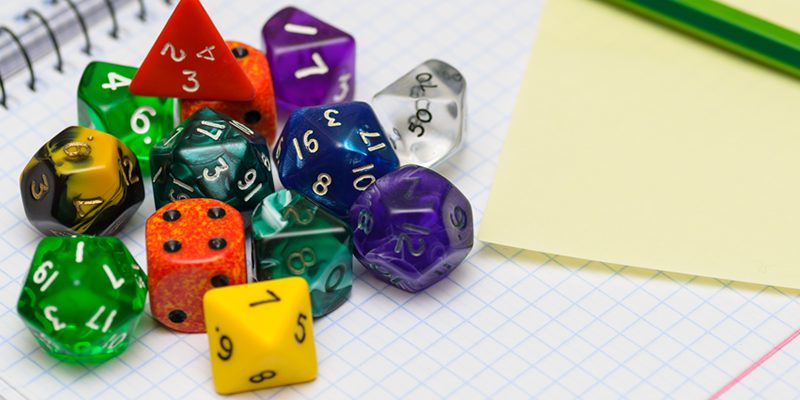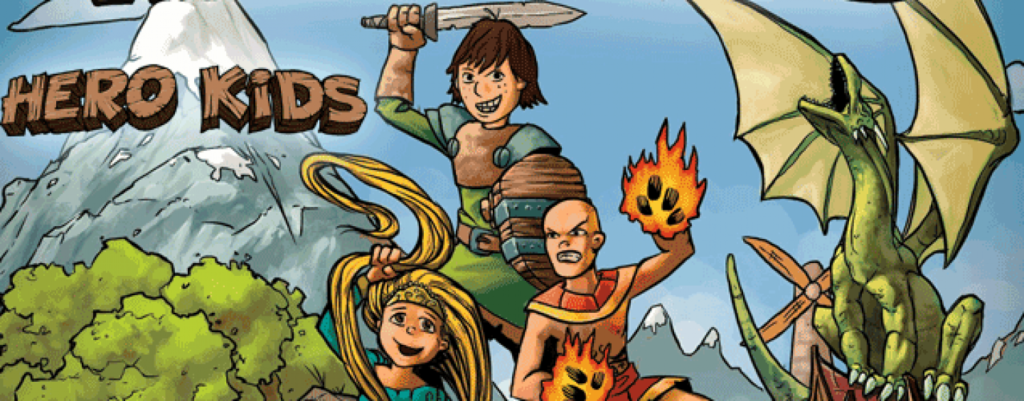Playing D&D with kids, and how to do it properly

So… You are having a family reunion in a week and would love to show your favorite TTRPG to your little cousins. Or maybe it is your 8-year-old daughter you want to internalize in this hobby. Having had my little cousins and smaller siblings wanting to play, I had to do some research on how to make the game more accessible for people from an age of 8 – 15 years old. Now, I’ll be sharing my knowledge in order for you to be able to do the same.
D&D is a hard game to learn. Maybe try something else?
Dungeons and Dragons has always been one of the most difficult TTRPG to learn. Even though 5th Edition did make things a lot easier, there are still lots of things that can be tough for a small child to remember.
That’s why I wanted to present you with some very fine alternatives (didn’t get to try them out with my family but would love to in some future occasion):
Note: These aren’t all free. Click images to go to their respective download sites


Nope. I want them to learn how to play D&D
Colored Dice
One of the biggest problems with new players, no matter their age, is differentiating which dice is the one they are looking for. This can be easily solved with colored dice. Assign a color pattern to each kind of die: d4 are the red dies, d6 the white ones, d10 the purple ones, and so. For this, I recommend getting individual dice from a game store instead of buying a full set in order to get the specific colors you are looking for. By the time each player has their dice, tell them which die to roll depending on the color pattern previously assigned.
Try to start calling each die by their actual name by the third or so session, as it is useful for the players to know them for when they want to get their own dice in the future, or for future RPGs they may want to play.
Simplified Character Sheets
Another thing new players and children have trouble with is finding the stuff they are looking for in their character sheets. The first time you see one, it looks pretty intimidating with all the numbers and letters cramped up in a single page (or more). To solve this, some friendly internet people created some you can use. Note that the one I’m offering you is one I liked and used, but there are several other alternatives that could be better if you start looking on the internet.
This character sheet has got lots of descriptions and help for what everything means and how it is used:
Spells Sheet (for spellcasting classes)
Leveling up
Kids around the ages of 8-15 years old tend to like their characters being aggressive and getting what they want when they want it. This is mostly video games’ fault, in which for leveling up or getting stronger they need to kill enemies and gain XP. However, D&D doesn’t always work like that. You could run a hack and slash style of campaign for them, but they will be losing a great amount of what makes this game so great.
The milestone system is an awesome way of leveling up for some campaigns. If you are playing with small children, it might be the best way as they don’t have to keep track of how much XP they have accumulated, nor need to sum such big numbers. By the end of each session, recap their good decisions, which will make them level up faster, such as making a trap for the goblins to fall on instead of going head on to attack the big group, parlaying with the pirates instead of chopping the leader’s head off, or their great teamwork during a certain encounter. This last thing can be done with XP too, by awarding more experience for their most important actions or decisions. However, I discourage that style of play with kids as they mostly see killing monsters = more XP than talking their way through or evade them.
Be descriptive, but not Tolkien-style
Kids’ attention span is usually much shorter than an adult’s one. On the other hand, their imagination is much wilder. Play with these aspects as their DM by giving great concise descriptions of what their characters see, and feel. If you take too long, describing even the most littlest of details (I like to call it the Tolkien’s way of describing things), you will lose their attention and they will start playing with their cell phones, with their dice or breaking the immersion from others.

Art by Bob Al-Greene
Use cards or physical objects
Having things in a physical format is a widely known way to avoid forgetting things. If you are giving your players an out of the ordinary item (be it magical or special in some other way), try giving that person a sheet of paper with an image and item description. This way, they won’t be asking you what the item does every time they remember the item’s existence. If it is an item that might be better for a specific player, point that to them, giving a logical explanation. Children might have trouble understanding stats at first, so you would need to give them some assistance so the wizard doesn’t end up wielding a Berserker Axe just because it looks cool.
Starter Set
Don’t know where to start? Wizards of the Coast already gave us an excellent adventure, which with some little changes to lower the difficulty can be just the adventure you need to start playing with some kids: D&D Starter Set, Lost Mine of Phandelver. It is made in a way that it teaches both DMs and players all the important things about the game. Certainly, a must play for new players. Additionally, it comes with a set of dice and prebuilt character sheets that can be tweaked so you can use both the dice and character sheet methods listed above.

Conclusion
As long as you keep things simple and take the time to properly explain the rules to the kids you shouldn’t encounter many troubles. Make sure to let them know D&D is not a competitive game, and that it is not players vs DM, but everyone together working to build an amazing story they probably won’t forget about for a long time, if ever.
Do you have any other tips for playing with children? Make sure to let me, and other readers know in the comments!
If you liked this
Have these children you are playing with got to know the game by watching Stranger Things? Why not throw some Demogorgons or Demodogs at them? Click here for some stats for these monsters.



